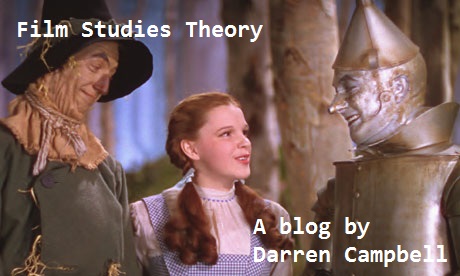The
semiotic approach to analysing stars allows us to examine the
differences between them through analysing the signs in their star image.
It shows that the appeal of stars comes from how they relate to issues like class, gender or race.
Audience
responses are presented as being a product of certain ideological
processes, as opposed to individual tastes. He argues that the appeal
of stars lies in the way their image can resolve ideological
contradictions for the audience. “Star's image was a construct, not
a pure expression of their 'real' personality.” (McDonald, 1995,
p.81)
Intertexuality looks at the overall meaning of the
star within the context of a broader network. The
historical meaning of Marilyn Monroe's image in relation to issues of
sexuality and ethnicity are examined. Her star image served to redefine female
sexuality, encouraging women to attain the quality of desirability.
“Monroes blondeness and vulnerability offered a construction of
female sexuality which is unthreatening and willing.” (McDonald,
1995, p.85)
Star images sought to create a sense of individual identity by juxtaposing the public image of their on-screen appearances
(performer) with the private image of their off-screen life (the real
person.) “The marketing of stars is one of the ways in which the
industry attempts to ensure the stability of box-office returns.”
(McDonald, 1995, p. 80)
Dyer
discusses how the manufactured appearance is thought to be more real
than the actual appearance. In this culture, manufacture is thought as more real than appearance. Stars are, obviously, a case of
appearance, as all we know about them is what we see and hear. A big
part of our view of stars is the wide media construction of them.
Star
image is not just their films, “but the promotion of those films
and of the star through pin-ups, public appearances, studio hand-outs
and so on.” (Dyer, 1986, p. 3) Stars images have histories that
long outlive the star's career (Monroe has continued to be a sex
symbol 50 years after her death.)
The
audiences ideas of a star (from fan magazines and clubs, box office
receipts and audience research) can have an effect on the producers
of the stars image. The presence of a star promises a certain quality
you'll see if you go to the film.
Stars
have tended to be a more important category than directors, both to
the industry and to the audience. The first two focus on the star as
text while the others look at how the audiences relate to stars.
Psychoanalysis
may offer us an explanation as to why we like stars but fails to
account for why certain social groups like and dislike particular
stars.
The
spectator gets pleasure from stars presented as an object for the
spectator to view voyeuristically. This pleasure comes from a
position of control over the star as “The stars image exists for
the spectators pleasure and cannot respond to the spectator who
surveys it.” (McDonald, 1995, p.87)
Today,
we looked at a number of interesting questions such as: Which stars
are paid the most and why? This allowed for some interesting
discussion on the subject and we decided that actors who get paid the
most have usually recently starred in a high-grossing movie, has
recently won an award (Academy Award or Golden Globe) or because they
are part of a large franchise (Harry Potter, Pirates of the
Caribbean)
The
main task of Star studies has been to explain the appeal of stars,
which can be done through four main approaches: Semiotics,
intertexuality, psychoanalysis and audience studies.
Tom
Cruise, once a teen heart throb, is now usually known as a little guy
with crazy religious beliefs. The death of any actors career is
usually when his personal life becomes more famous than his work. He
found stardom in the ’80s, with box office smash “Top Gun.” He
married Mimi Rogers, who introduced him to Scientology.
The
marriage ended in divorce and he went on to make huge blockbusters:
“Days of Thunder,” “Interview with the Vampire,” “Mission
Impossible” and “Jerry Maguire.” He became an international
superstar, but things soon declined. Cruise’s second marriage ended
in divorce and there were questions about the role Scientology played
in it.
Two
events made his career decline. Firstly, his infamous appearance on
“The Oprah Winfrey Show.” Cruise hopped onto a couch, fell to one
knee and repeatedly proclaimed his love for Katie Holmes. The moment
was uploaded to YouTube and ridiculed. It was enough to tarnish his
reputation.
The
second was when he verbally attacked Matt Lauer on “The Today
Show,” claiming he knew the history of psychiatry better than Lauer
and questioning him about prescription drugs.
Cruise
fired his long-time publicist Pat Kingsley, who had effectively
controlled access to him keeping tabloid rumours at bay. Next,
Cruise's production deal with Paramount wasn't renewed. “He was
embarrassing the studio. And he was costing us a lot of money...Women
everywhere, had come to hate him.” (Bonawitz,
2009)
Cruise's
Q score (a measure of the popularity of celebrities) at this time had
fallen 40 percent. Also, it was revealed that Cruise is the celebrity
people would least like as their best friend. This is a far cry from
his multiple “Most Beautiful People in the World” and “Most
Popular Celebrity” nominations.
Reference
List
McDonald,
P., 1995. Star Studies in Joanne
Hollows and Mark Jancovich, eds., Approaches to Popular
Film. Manchester: Manchester
University Press.
Dyer,
R., 1986. Heavenly Bodies: Film Stars and Society.
London: Macmillan.
Bonawitz,
A., 2009. Tom Cruise turned off all women.
Available at: http://www.cbsnews.com/2100-207_162-2139116.html.
Accessed on 22/11/2012.




